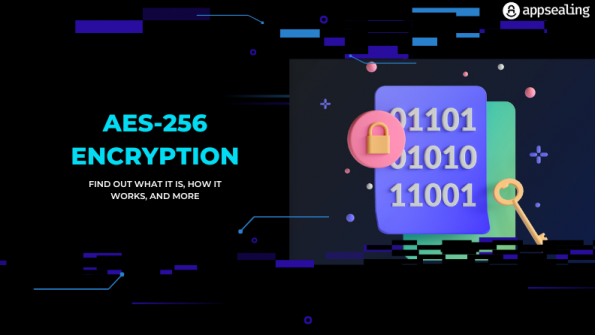The Advanced Encryption Standard (AES), specifically its 256-bit iteration, is frequently exalted as the epitome of cryptographic security. Renowned for its robustness, AES-256 is ubiquitously employed across diverse industries to safeguard sensitive data. However, it is essential to scrutinize the assertion that this encryption standard is universally ideal. The following exploration delineates several underlying factors illuminating why AES-256 may not be the panacea for every encryption requirement.
To commence, consider the computational overhead associated with AES-256. This variant necessitates a significant amount of processing power, particularly when compared to lower bit variants, such as AES-128. Encryption and decryption operations demand resources, influencing system performance. On devices with constrained performance capacities, such as legacy systems or IoT devices, the relentless energy consumption and latency can render AES-256 impractical. In these scenarios, a lightweight cryptographic algorithm might offer a more suitable trade-off between security and resource efficiency.
Moreover, the deployment environment plays a fundamental role in determining the appropriateness of AES-256. In applications where rapid data processing is paramount, such as real-time communications and high-frequency trading platforms, the additional time spent in executing the encryption may result in significant bottlenecks. Organizations operating in such fast-paced domains often prioritize speed over maximum security, opting for alternatives that meet their time-sensitive requirements while still providing a reasonable level of protection.
Another critical aspect to consider involves key management complexities associated with AES-256. While the large key size is a boon for security, it also necessitates a more sophisticated key management infrastructure. Larger keys increase the potential attack surface; if keys are mismanaged or inadequately protected, the overall security of the system fails, regardless of the underlying algorithm’s strength. In environments where robust key management practices cannot be implemented, the relative security assurances of AES-256 may be rendered moot.
Further, the applicability of AES-256 must be examined in conjunction with its resistance to specific types of attacks. While it is resilient against brute-force attacks, there exist targeted vulnerabilities, such as side-channel attacks. These exploits capitalize on the physical implementation of cryptographic algorithms, revealing sensitive information through indirect means—think timing analysis or electromagnetic leaks. In contexts where such attacks are plausible, AES-256’s theoretical strength might not suffice without comprehensive countermeasures.
Additionally, AES-256 is predicated on the assumption of secure key distribution mechanisms. If adversaries can intercept or manipulate the key before it reaches the intended receiver, they can undermine the encryption’s effectiveness entirely. This observation accentuates the reality that the security of encryption schemes is often intricately linked to broader system architecture, encompassing both hardware and software components. In environments where secure key distribution is tenuous, relying solely on AES-256 does not guarantee security in practice.
A common misconception is that the mere use of AES-256 automatically confers invulnerability. However, the integrity of data encryption is equally contingent upon the implementation of cryptographic algorithms. Flawed implementations may introduce vulnerabilities, such as weak random number generators or improper padding schemes. Consequently, even AES-256 can be susceptible to cryptographic failures if not executed with meticulous attention to detail. This juxtaposition underscores the reality that the mere selection of a robust algorithm does not insulate systems from all vulnerabilities.
On a broader scale, the specter of regulatory compliance must also be acknowledged. Numerous industries are governed by stringent regulatory frameworks that dictate specific encryption standards and methodologies. For instance, while AES-256 might be deemed overkill in certain scenarios, organizations may be compelled to adopt it due to compliance mandates or industry best practices. Consequently, reliance on AES-256 may not stem solely from its technical merits but from external pressures that compel its use, irrespective of its efficacy for the unique requirements of the task at hand.
Moreover, the evolving landscape of quantum computing poses a significant challenge to conventional encryption methodologies, including AES-256. Quantum computers, while not yet fully realized, harbor the potential to undermine the cryptographic assurance of AES-256 through advanced algorithms, such as Grover’s algorithm. This algorithm can theoretically perform a brute-force attack in a manner that significantly reduces the effective key strength. While AES-256 is currently considered resistant to known classical computers, the impending quantum era serves as a reminder that no encryption scheme can be deemed impervious indefinitely.
Finally, user behavior and awareness remain pivotal in assessing the viability of any encryption standard. Data encryption is only as robust as the protocols guiding user interactions. Mismanagement of authentication credentials, neglect in applying updates, and failure to educate personnel about best practices can jeopardize even the most formidable security measures. Thus, the efficacy of AES-256—and encryption in general—exemplifies the intricate interplay between technology and human factors.
In conclusion, while AES-256 is a formidable encryption algorithm, its appropriateness is highly context-dependent. The intricate relationship between performance, key management, implementation, regulatory compliance, and potential future threats underscores that it may not be the optimal solution for every use case. Organizations must engage in a thorough risk assessment, evaluating their specific needs and vulnerabilities, before adopting any encryption standard—AES-256 included—filters through practical use cases, rather than a blanket endorsement based on its theoretical strength alone.









Leave a Comment